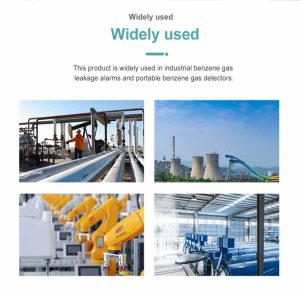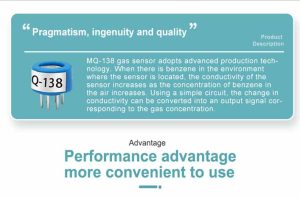Environmental monitoring plays a vital role in safeguarding our planet and human health. The continuous advancements in gas sensor technology have revolutionized the way we monitor and analyze various gases in our environment. From industrial settings to urban areas, gas sensors have become indispensable tools for tracking air quality, ensuring workplace safety, and protecting public health. This article explores the significant advancements in gas sensor technology and their transformative impact on environmental monitoring.
Understanding Gas Sensor Technology:
Gas sensors are devices designed to detect and measure the concentration of specific gases in the environment. They work on various principles such as electrochemical, semiconductor, infrared, and photoionization detection. These sensors can detect a wide range of gases, including carbon dioxide, carbon monoxide, methane, nitrogen dioxide, ozone, and volatile organic compounds (VOCs). The latest gas sensor technologies have significantly improved their accuracy, sensitivity, selectivity, and response time.
Enhanced Sensing Capabilities:
Advancements in gas sensor technology have led to enhanced sensing capabilities. Modern gas sensors can detect even trace amounts of pollutants in the environment, allowing for improved detection and analysis. They can identify subtle changes in gas concentrations, helping us understand the sources and patterns of pollution. This level of specificity and accuracy enables targeted interventions to mitigate environmental risks and ensure effective pollution control measures.
Miniaturization and Portability:
The miniaturization of gas sensors has been a remarkable achievement in recent years. Miniaturized gas sensors are more compact, lightweight, and portable, enabling their integration into wearable devices, smartphones, and drones. This development has transformed the field of personal environmental monitoring, empowering individuals to assess their immediate surroundings for potentially harmful gases. Additionally, the portability of gas sensors allows for efficient deployment in remote or inaccessible areas, facilitating comprehensive monitoring across diverse landscapes.
Internet of Things (IoT) Integration:
Gas sensors have seamlessly integrated with the Internet of Things (IoT), enabling real-time data collection, analysis, and remote monitoring. By connecting gas sensors to IoT platforms, environmental monitoring systems can provide instant access to data insights, trends, and alerts. This integration facilitates proactive decision-making and timely interventions to prevent environmental hazards. Moreover, IoT-enabled gas sensor networks enable the creation of smart cities, where pollution levels can be continuously monitored and managed for improved urban living standards.
Applications in Various Sectors:
Gas sensor technology finds applications across multiple sectors, each with its unique environmental monitoring needs. In industrial settings, gas sensors are essential for ensuring occupational safety by detecting hazardous gases and preventing accidents. Environmental agencies employ gas sensors to monitor air quality, assess pollution levels, and implement targeted measures for environmental protection. In transportation, gas sensors are used to monitor vehicle emissions and comply with emission regulations. Moreover, gas sensors play a crucial role in indoor air quality monitoring, ensuring healthy environments in homes, offices, schools, and healthcare facilities.
Future Implications:
The future of gas sensor technology holds immense potential. Further advancements aim to improve sensor selectivity, sensitivity, response time, and durability. There is ongoing research to develop low-cost sensors for widespread deployment and large-scale environmental monitoring networks. Additionally, the integration of artificial intelligence and machine learning algorithms with gas sensors can enhance their predictive capabilities, facilitating early warning systems for potential hazards.
Conclusion:
The advancements in gas sensor technology have revolutionized environmental monitoring practices, leading to better understanding, control, and mitigation of environmental risks. With enhanced sensing capabilities, portability, IoT integration, and diverse applications, gas sensors have become indispensable tools in safeguarding human health and the environment. As technology continues to evolve, we can anticipate even more sophisticated and versatile gas sensor systems, further driving the progress towards sustainable and healthier ecosystems.
 : +86 155 8830 2704
: +86 155 8830 2704 : jxdziot@gmail.com
: jxdziot@gmail.com
